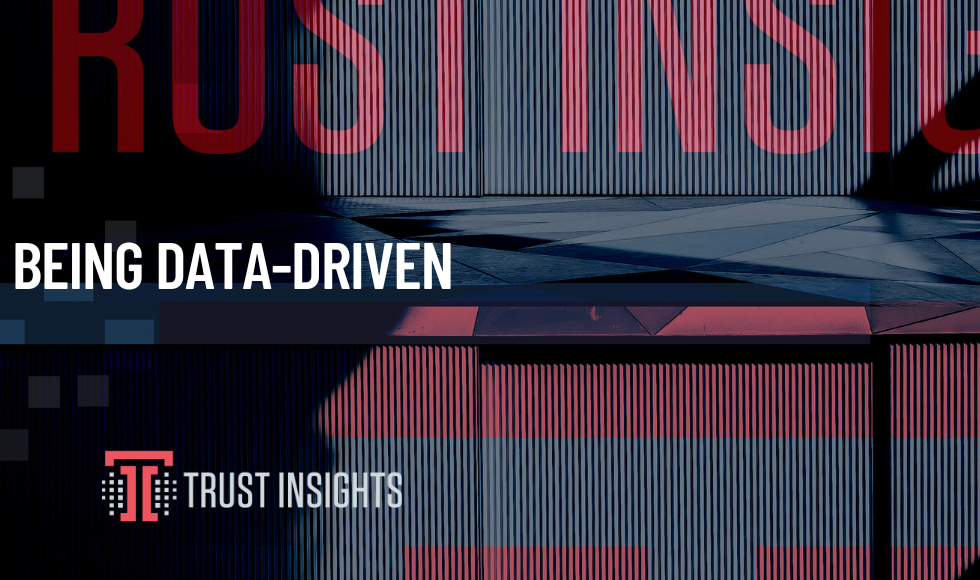This data was originally featured in the May 8th, 2024 newsletter found here: INBOX INSIGHTS, MAY 8, 2024: BEING DATA-DRIVEN, AI HALLUCINATIONS
DO I STILL NEED TO BE DATA-DRIVEN?
Why are we obsessed with being data-driven? Does it matter? Does it actually give us a competitive advantage? Where does AI fit in?
Being “data-driven” is just another way to say informed decision. Can you ignore the data? Yes, many people do when the data doesn’t tell them what they want to hear. But should you at least listen? Also, yes.
Let me caveat that by saying, if you want to use your data with AI, you have to be data-driven.
Why aren’t more companies data-driven?
The benefits of being truly data-driven are clear. You know exactly what is happening. Good or bad. With that comes a lot of hard work. Collecting data is the easy part. Easy in that you can turn the systems on. Collecting the right data means requirements gathering, data governance, and maintenance. Three phrases that no team wants to hear. They might as well be curse words.
REQUIREMENTS GATHERING
Believe it or not, gathering requirements doesn’t have to be a long, drawn-out process. I’ve been on projects where the requirements gathering took months. This is an opportunity to use the 5P Framework with generative AI.
The 5P Framework is Purpose, People, Process, Platform, and Performance.
Start by defining your purpose and performance. What problems are you trying to solve with a CRM? What business processes do you want to improve? What insights do you need from the data? What are the outcomes you want to see?
Next, determine which people you are involving. You’ll want to figure out who owns the data, who analyzes it, who uses it, and who maintains it. In some companies, this is all the same person. In other companies, these tasks are spread out over multiple departments.
Since you already know your platform, you can start to use generative AI for the process. You could start by asking generative AI to give you a template for data requirements. If you already have one, you can load that into the system.
Continue building your prompt by feeding the system the information you have from the 5P exercise. This will help the system put together the requirements that you need to consider.
I did this as a very simple test. I told Google Gemini that I did not have a requirements template. I also told Gemini that I was the only person in my company and what my goals for using a CRM would be. What I got back was essentially a questionnaire that I could fill out to serve as my requirements. The system asked questions about my sales cycle, what functionality I had to have, and gave me some practical considerations. The whole thing took about ten minutes.
DATA GOVERNANCE
This is where a lot of teams fall short with their data. I asked Google Gemini why data governance is so hard? This is what it told me:
Successful data governance necessitates:
- Strong Executive Leadership: Getting top-down buy-in is necessary for the cultural shift and resources.
- Start small, scale up: Pilot projects on focused use cases help establish processes and get early wins.
- Invest in the right tools and people: Automated processes and skilled data stewards streamline effort.
- Emphasize education: Ongoing training for all employees builds data-driven culture in the long term.
It’s a solid answer. In my experience, the first two points are really where things fall apart. Good data governance is, in fact, part of a company’s culture. It means following protocols and creating documentation. Basically, the things that most people really don’t want to do. Without support and accountability from the top, it generally doesn’t get done. The other issue, starting small, is true for a lot of initiatives. AI, for example, is also a culture shift. To find success with integration of data governance (or AI), companies need to pilot and test. It’s changing process, training people, and ensuring compliance.
In regards to being data-driven, a lack of data-governance goes hand-in-hand with a lack of trustworthy data. If you’re considering using generative AI to help with your analysis tasks, you might want to evaluate your governance plan.
MAINTENANCE
Data collection and data analysis are not one-and-done tasks. They are processes that you need to have running consistently. Once you set up a new data collection system, like a CRM, you have to maintain it. As your business changes, so should your data collection. As your team changes, so should your data collection. As your customers change, so should your data collection. Even if you review your data systems once a year, you’re doing more than a lot of companies. I would personally recommend at least once a quarter.
So, do you really need to be data-driven? To make thoughtful decisions and use new tools like generative AI, yes.
If you want help becoming more data-driven, you know how to reach me.
Are you data-driven? Reply to this email to tell me or come join the conversation in our Free Slack Group, Analytics for Marketers.
– Katie Robbert, CEO






